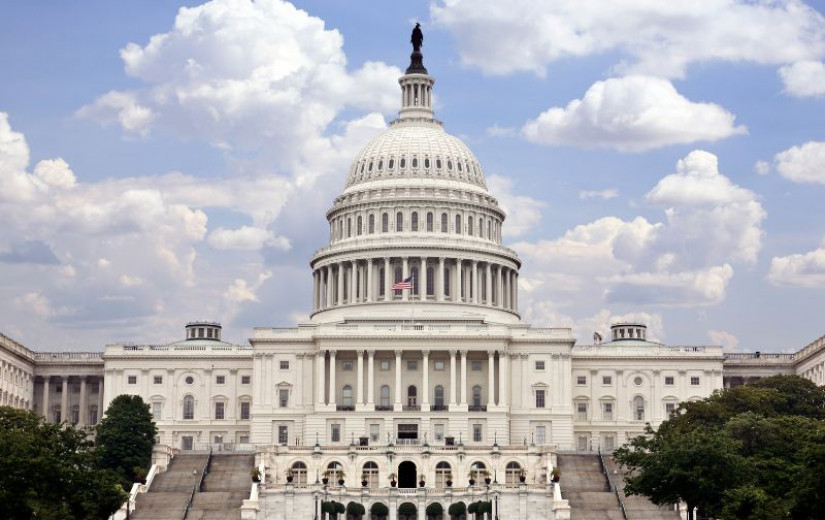
Support justice-driven, accurate and transparent news — make a quick donation to Truthout today!
In the wake of the United Nations Security Council rubber-stamping Donald Trump’s plans for Gaza — including the creation of a so-called “board of peace” and a militarized “international stabilization force” — the very notion of rebuilding is slipping through the cracks, overshadowed by what is framed as the more urgent need to keep the peace in place. But peace manufactured this way is nothing but an expansion and deepening of the humanitarian crisis already unfolding.
Gaza City was already in a perpetual state of destruction and rebuilding long before the current genocide erupted. It has endured relentless aggression that reduced residential homes to rubble, wiped out entire neighborhoods, and massacred civilians. Five wars — 2008, 2012, 2014, 2021, and May 2023 — brutally dismantled Gaza’s infrastructure, economy, agriculture, education, and culture, leaving behind a consumed cycle of devastation.
Yet each time, once the bombardment stopped, reconstruction began, even if it was in a slow rhythm. Gaza would rise again — recovering, thriving even, in forms more vibrantly echoing and picturesque than before. But this genocide has unleashed an unprecedented scale of destruction, so vast and unrelenting that stumbling upon an intact home today feels like witnessing one of life’s seven miracles.
According to UN estimates, more than 92 percent of Gaza’s residential buildings have been damaged or completely destroyed.
Heaps of debris now choke the war-ravaged streets, limiting free movement. The total amount of rubble is believed to be around 60 million tonnes.
The same UN committee stressed the urgent need to begin Gaza’s reconstruction — an effort they estimated would cost around $70 billion.
This genocide has unleashed an unprecedented scale of destruction, so vast and unrelenting that stumbling upon an intact home today feels like witnessing one of life’s seven miracles.
But rebuilding is not as straightforward as it sounds. In Trump’s so-called “peace plan,” which the UN Security Council endorsed, he promised that, upon a ceasefire, he would allow and facilitate the entry of heavy machinery, concrete, and reconstruction materials necessary to revive Gaza. Yet, so far, only a trickle of equipment has been permitted to enter.
For Abdallah Sharsharah — a lawyer, legal researcher, and social and humanitarian worker who has been forcibly displaced 11 times and lost his parents’ seven-story home in northern Gaza, along with his apartment — the loss has been immense. “It’s not just me who lost a home,” he lamented. “My entire neighborhood has been wiped out. I can’t even reach it — it’s nothing but piles of ruins now.” His voice trembled as he added, “Even our other homes were sabotaged and turned into a military base for Israeli forces, who lived there enjoying food and comfort, while we, the Indigenous people, remain homeless and hungry.”
Even during the fragile ceasefire back in January, Gazans haven’t had any real opportunity to reclaim what was left of their semi-livable homes. Sharsharah recalled, “When the January ceasefire came into effect, many people, including myself, returned to northern Gaza — only to be stunned by what we found. Houses fell into two categories: either completely flattened to the ground or standing like hollow shells, with only their outer walls intact. The scale of destruction was beyond imagination,” he sighed. “But I was among the luckiest; my apartment was still standing. So I didn’t hesitate to repair it, to make it more inhabitable. I spent a great deal of money buying concrete, glass, windows, and other essentials — believing, naively, that this ceasefire would last.”
“Occupation forces prevent cement and other reconstruction materials from entering, claiming they have ‘dual use’ in military operations.”
His voice fell. “But after only three months, the ceasefire collapsed. Israeli forces invaded our neighborhood again and razed my apartment. That’s how I lost my home, my only shelter — and all the money I had poured into rebuilding it.”
Sharsharah continued, “So it’s hard for people now to begin rebuilding when there’s no guarantee of a lasting ceasefire.” he pointed out that Israel has been blockading Gaza since 2007, but it has tightened its noose far more since the genocide broke out. “Now, occupation forces prevent cement and other reconstruction materials from entering, claiming they have ‘dual use’ in military operations. That’s why the destitute people are still suffering in tents,” he explained. “They want to repair their homes, but the materials available fall woefully short. Yet their will to rebuild remains strong, but their hands are tied.”
Reconstructing Gaza will be a tumultuous journey. As Professor Andreas Krieg, a Middle East security expert from King’s College London, observed to BBC, “It’s worse than starting from scratch. Here, you’re not starting in the sand — you’re starting with rubble.”
But it’s glaringly clear that what litters Gaza’s streets isn’t only shattered cement, but also the remnants of human bodies. According to the Committee of Missing Persons in Gaza, more than 10,000 bodies remain buried beneath the rubble.
Sharsharah recounted, “In the neighborhood where I’m living now, three residential towers were struck during a massacre in October 2023. Two hundred people were killed and are still buried under the rubble.” He went on, “Israeli forces even exhumed the corpses of people we managed to bury. Their remains are now mixed with sand and dust — violated even in death.”
What litters Gaza’s streets isn’t only shattered cement, but also the remnants of human bodies.
Clearing the debris and then rebuilding will wreak severe environmental repercussions that could have long-term, disastrous effects on public health and local ecosystems, even as the trauma of the genocide is physically passed down to future generations through epigenetics. A study published by the Social Science Research Network found that the destruction, clearing, and rebuilding of Gaza could release around 30 million tonnes of carbon dioxide equivalent — a staggering amount, higher than the combined annual greenhouse gas emissions of many countries.
Out of a deep moral and patriotic sense of responsibility, many individual efforts — alongside the Gaza Civil Defense — have emerged to defy the imposed conditions: releasing the remains of loved ones trapped beneath the rubble, clearing the streets of debris, and trucking it off to Gaza’s coast. Sharsharah reflected, “Gaza City is tiny in size, small in population — no larger than a single neighborhood in Cairo.” He added, “To dispose of the rubble, we might pile it up along the beach so that it can be recycled and used to restore Gaza’s port.”
For Hatem Hani Al-Rawagh, a 32-year-old father and photojournalist who has worked tirelessly to document Israel’s war crimes in Gaza over the past two years under unimaginable conditions, survival has come at a heavy price. “We survived physically, but not mentally,” Al-Rawagh said. “We are still traumatized.”

He sighed and went on, “Our home was destroyed just six days before the October ceasefire was declared — the outer walls still stand, but inside it’s hollow.”
Al-Rawagh and his family lost dear friends and loved ones. They have been displaced six times, and Al-Rawagh himself was forcibly separated from them. “Fulfilling my duty as a journalist,” he said, “is like wearing a badge of honor everywhere else, but here in Gaza, it’s a death sentence.”
“On the morning of October 7,” Al-Rawagh recounted, “I headed to my office in Press House–Palestine, where I had worked for six years. We immediately declared a state of emergency. Since that moment, I haven’t seen my family. The fear of Israel’s protocol of targeting journalists — often along with their families — has horrified me.”
He continued, “It was never a mere duty to keep reporting. I faced Israel’s systemic campaign of annihilation, deliberate internet blackouts, and the challenges of transportation. Many times, I couldn’t bear to look at what I was filming, but my journalistic oath — to expose Israel’s war crimes — kept me going. The sheer magnitude of Gaza’s suffering compelled me to continue.”
Al-Rawagh explained, “President Trump’s so-called peace plan may have technically put an end to the onslaught, but Gaza will need years to recover. With 92 percent of Gaza’s residential buildings flattened, people are now living in dire conditions, in fragile tents.” His voice trembled. “My work is now intertwined with humanitarian camps. I’ve come to realize that the average lifespan of these tents is barely four months before they’re torn out. Many of these families lost their homes several times during their lives in Gaza — and some had just secured new ones shortly before the genocide began.”
“People are too afraid to even begin repairing their homes. The ceasefire could collapse at any moment.”
Al Rawagh added, “Before this genocide, reconstruction after a war would usually take three to four years, even though the destruction wasn’t nearly as severe as today. Now, I predict it will take more than a decade for Gaza to rebuild.”
“Unless concrete efforts are taken by leading countries — such as China, which has already expressed its intention to help — Gaza’s reconstruction will remain stalled,” he said.
As Al-Rawagh pointed out, China has extensive experience in managing humanitarian crises and has advanced cutting-edge technologies that could be vital in rebuilding. Having endured and recovered from devastating earthquakes, floods, and volcanic eruptions, China has rebuilt its own cities in a more developed way, and it is already actively competing for construction contracts in Gaza.
I asked Al-Rawagh what could be the best solution to ease people’s suffering until that reconstruction comes into place. He replied, his voice heavy with distress, “People are too afraid to even begin repairing their homes. The ceasefire could collapse at any moment. I, too, long to feel the warmth and comfort of my home again — it has become one of my wildest dreams. But like everyone else, I’m afraid.”
“People have run out of money,” he continued. “They’ve spent their savings on the skyrocketing cost of food, displacement, and mere survival.” Then, with a determined tone, he added, “There are no real solutions except for allowing caravans to enter Gaza in large quantities. Tents can’t withstand Gaza’s climate — it’s a coastal city, with harsh humidity, cold winds, and sudden heat. Caravans are the only temporary shelter that can offer people dignity and protection.”
“All war zones around the globe have been rebuilt,” Sharsharah emphasized. “Gaza is not the first to witness war, but it is the one annihilated the most. Across history, every bombed-out city has been rebuilt — and so will Gaza, if the intentions are genuine.”
“A revived Gaza requires more than a reconstruction plan; it needs transitional justice,” Sharsharah added. “And it should not be deemed as mere physical recovery, but as compensation for what bled from Palestinians — holding the war criminals to account, guaranteeing that genocide never happens again, and confronting what has been set in motion horribly for two years, not as a war, but as a genocide and annihilation campaign.”
“Homes will be rebuilt. Universities, mosques, churches, schools, and historical palaces will be restored. We yearn to see Gaza as it was before the genocide — thriving and bustling — and we are giving it our all to get a glimpse of that back,” Al-Rawagh said. “But the more than 68,000 souls who were taken will never be retrieved.”
“Two years into this genocide, I have lost not just tangible belongings, but things too tremendous to count as losses,” Sharsharah added, speaking through pain. “I’ve lost three of my closest friends along with their families — not mere acquaintances, but brothers, family, and colleagues. Such losses can never be compensated. Such friendships cannot be reconstructed. Such pure, innocent souls cannot be brought back to life. They are not collateral damage.”
Imperialism, colonialism, apartheid — all must be torn down, with no foundations ever laid for them again.
Gazans have suffered — they have been killed, displaced, tortured, abused, starved, detained, and maimed. They have lost loved ones, and at some point, they may have grown weary of being punished simply for being Palestinian. But that will never mean giving up their land, nor submitting to the thinly veiled attempts to dismantle them.
“The hidden political agenda seeks to curtail the number of Gazans — to ethnically cleanse them, or push them out of Gaza under the guise of ‘voluntary immigration’ through imposed demographic and economic changes. The goal of turning Gaza into the ‘Riviera of the Middle East’ is never meant to enhance the survival of its people, but rather to strengthen ties with Israel, to serve a broader politically profitable desire,” Sharsharah said. “This is why Palestinians today need to reconstruct their Palestinian political order so it truly represents their desire to be free and liberated — to have a clear political status that reflects their own views, which should be legally recognized everywhere, and is granted full legal powers to control land, sea, and air, and manage natural resources. This must not be separated from physical reconstruction. Justice must be obtained.”
But it is not just Gaza that urgently needs to be rebuilt — it is the world’s moral consciousness, too, that allowed all of this to happen. It is the world’s ideologies that must be dismantled and reconstructed based on humanity, not power. Imperialism, colonialism, apartheid — all must be torn down, with no foundations ever laid for them again. And only then can Gaza, and the world, truly rise.
Support media that fights fascism
Truthout is funded almost entirely by readers — that’s why we can speak truth to power, cut against the mainstream narrative and uplift the movements resisting fascism.
But independent journalists at Truthout face mounting political suppression under Trump.
We launched a fundraiser this month to combat these challenges. Sadly, we fell short of our goal before the deadline, but you can still make a difference. Please make a one-time or monthly donation to Truthout.








